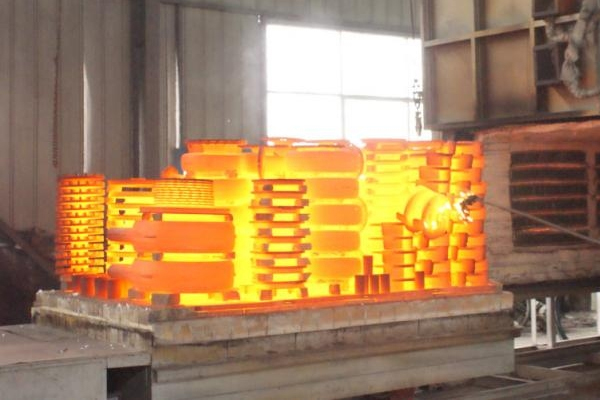Forgings in the forging process, heat treatment is the most important link, heat treatment roughly annealing, normalizing, quenching and tempering four basic processes, commonly known as metal heat treatment of the "four fire".
one, metal heat treatment of the fire - annealing:
1, annealing is to heat the workpiece to the appropriate temperature, according to the material and workpiece size using different holding time, and then slow cooling, the purpose is to make the metal internal organization to reach or close to the equilibrium state, to obtain good process performance and performance, or for further quenching for tissue preparation.
2, the purpose of annealing:
① To improve or eliminate steel in casting, forging, rolling and welding process caused by a variety of organizational defects and residual stress, to prevent the deformation of the workpiece, cracking.
② Soften the workpiece for cutting.
③ Refine the grain and improve the structure to improve the mechanical properties of the workpiece. (4) Prepare for the final heat treatment (quenching, tempering).
Two, metal heat treatment of the second fire - normalizing:
1, normalizing is to heat the workpiece to the appropriate temperature after cooling in the air, the effect of normalizing is similar to annealing, but the structure is finer, often used to improve the cutting performance of materials, but also sometimes used for some parts with low requirements as the final heat treatment.
2, the purpose of normalizing:
①It can eliminate the superheated coarse grain structure and widnells structure of the casting, forging and welding parts, and the banded structure in the rolling material; Grain refinement; And can be used as a pre-heat treatment before quenching.
② It can eliminate the network secondary cementite, and refine the pearlite, not only improve the mechanical properties, but also conducive to the future spheroidizing annealing.
③The free cementite at grain boundary can be eliminated to improve the deep drawing performance.
Three, metal heat treatment of the third fire - quenching:
1, quenching is to heat the workpiece after heat preservation, in water, oil or other inorganic salts, organic water solution and other quenching medium cooling quickly. After quenching, steel becomes hard, but at the same time becomes brittle.
2. Purpose of quenching:
①Improve the mechanical properties of metal materials or parts. For example: improve the hardness and wear resistance of tools, bearings, etc., improve the elastic limit of springs, improve the comprehensive mechanical properties of shaft parts, etc.
②, improve the material properties or chemical properties of some special steel. Such as improving the corrosion resistance of stainless steel, increase the permanent magnetism of magnetic steel, etc.
Four, metal heat treatment of the fourth fire - tempering:
1, tempering in order to reduce the brittleness of steel, the quench of steel at a certain appropriate temperature above room temperature and below 710℃ for a long time, and then cooling, this process is called tempering.
2, the purpose of tempering:
①, reduce the internal stress and reduce brittleness, there is a lot of stress and brittleness of quenching parts, such as not timely tempering often produce deformation and even cracking.
② Adjust the mechanical properties of the workpiece. After quenching, the workpiece has high hardness and brittleness. In order to meet the different performance requirements of various workpiece, the hardness, strength, plasticity and toughness can be adjusted by tempering.
③, stabilize the workpiece size. By tempering, the metallographic structure can be stabilized to ensure that deformation will not occur in the future use process.
④, improve the cutting performance of some alloy steel.
Post time: Aug-26-2021

